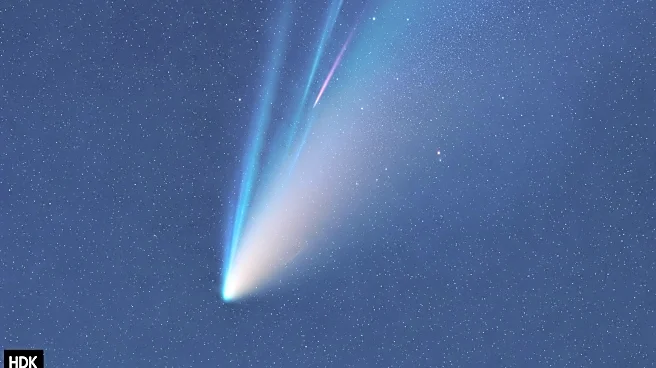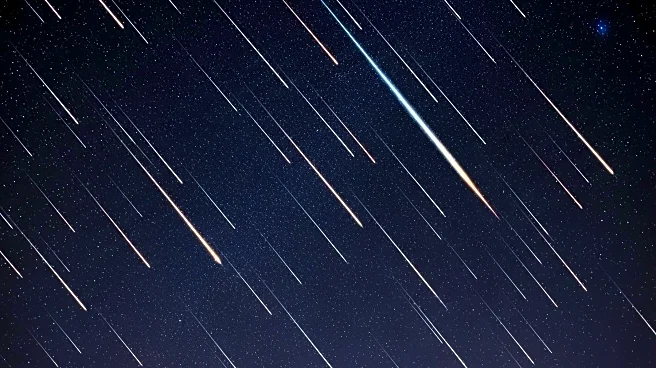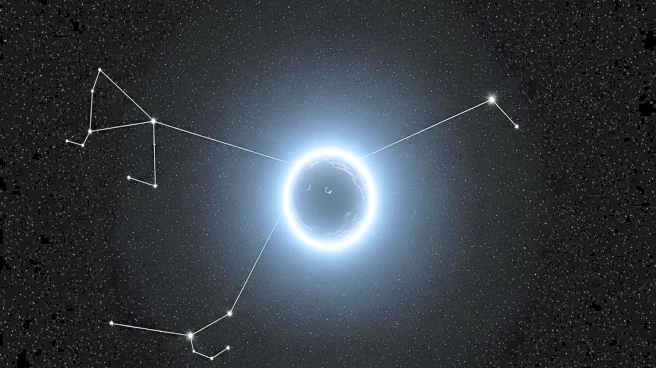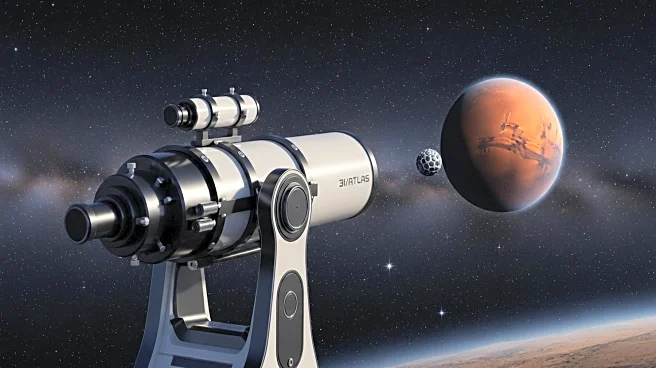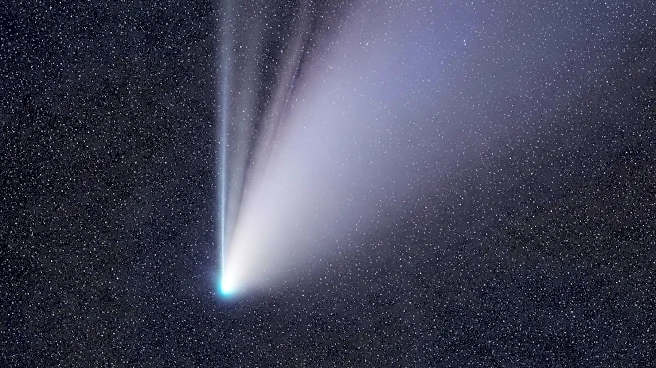What's Happening?
This October, skywatchers in the Northern Hemisphere have the chance to observe two comets, C/2025 A6 (Lemmon) and C/2025 R2 (SWAN), as they pass through the night skies. C/2025 A6 (Lemmon) was discovered in January by the Mount Lemmon Survey in Arizona, while C/2025 R2 (SWAN) was unexpectedly identified in September by amateur astronomer Vladimir Bezugly using images from the Solar Wind Anisotropies instrument. These comets originate from the distant edges of the solar system, offering a rare viewing opportunity for astronomy enthusiasts.
Why It's Important?
The appearance of these comets provides a unique opportunity for scientific observation and public engagement with astronomy. Comets are valuable for research as they offer insights into the early solar system and the composition of celestial bodies. For the public, witnessing such events can inspire interest in space science and foster educational opportunities. The visibility of these comets may also boost tourism in areas with optimal viewing conditions, benefiting local economies.
What's Next?
Astronomers and enthusiasts will continue to track the paths of C/2025 A6 (Lemmon) and C/2025 R2 (SWAN) as they move across the sky. Observatories and amateur astronomers will likely share images and data, contributing to a broader understanding of these celestial objects. Public interest may lead to organized viewing events, enhancing community engagement with astronomy.
Beyond the Headlines
The presence of these comets highlights the importance of international collaboration in space observation, as discoveries often involve contributions from both professional and amateur astronomers worldwide. This event underscores the role of technology in expanding our understanding of the universe, as instruments like the Solar Wind Anisotropies play a crucial part in identifying and studying distant objects.

